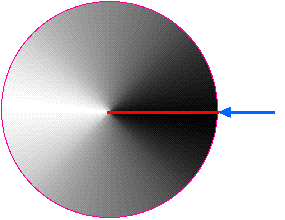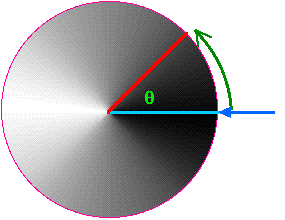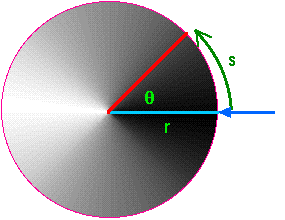
Angular Quantities
We began our study of linear motion by describing where something was relative to an origin.

In a similar way, for rotational motion, we can describe how far something has rotated by telling how far it has rotated relative to an orgin or a reference line.



![]()
![]()
When we studied linear motion, we immediately asked how fast an object is moving. Likewise, we can now ask how fast something is rotating. We call this the angular velocity and use the Greek letter omega to indicate it (that is omega, not "double-yew"),
When we studied linear motion, we then asked how fast an object is getting faster -- or how fast its linear velocity is changing; this was the (linear) acceleration a.. Likewise, we can now ask how fast something is rotating faster -- or how fast its angular velocity is changing.. We call this the angular acceleration and use the Greek letter alpha to indicate it ,
|
|
|
|
|
|
|
|
||
|
|
|||